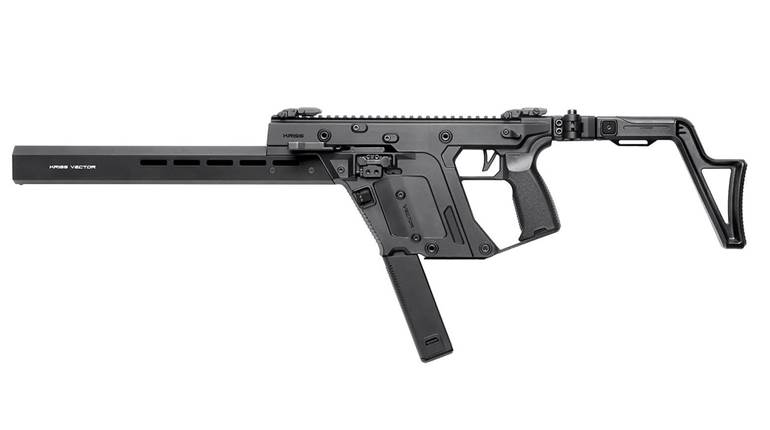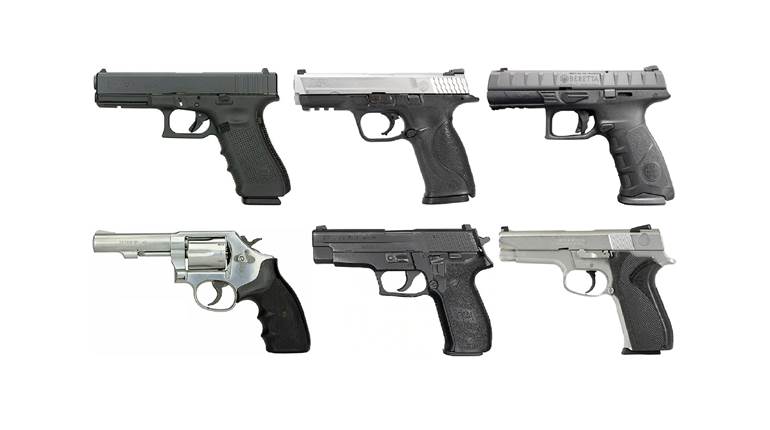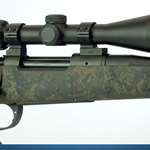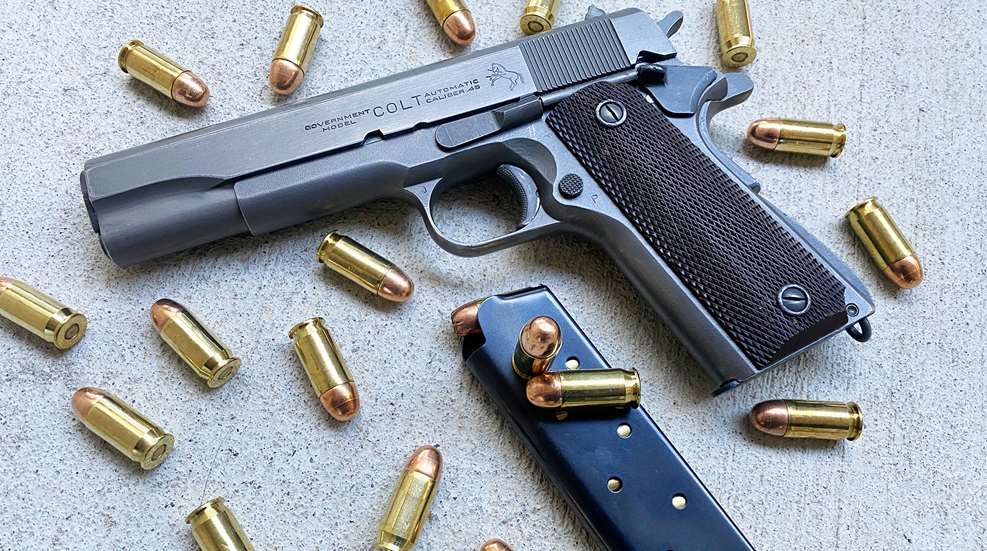
In 1899, a group of Moro tribesmen in the Philippines took umbrage toward a United States occupation force in the southern islands, thereby initiating what became known as the Moro Rebellion. The Moros were fierce fighters, with a reputation of resistance toward any outside rule. Officers in the U.S. force were armed with Colt Model 1892 revolvers chambered in .38 Long Colt, a cartridge that originated the blackpowder era. The load at the time featured a 150-grain lead round-nose bullet launched at 750 f.p.s. using smokeless powder. Muzzle energy was 201 ft.-lbs., about the same energy as a .380 ACP with a 90-grain bullet.
The Moros were reputed to tie themselves up with strips of vegetation from the jungles to prevent excessive bleeding and ingested locally made drugs to block the pain from wounds. Engagements involving the Colt double-action Model 1892 often resulted in the officer being killed or severely wounded by these motivated Moro juramentados. This prompted the War Department to launch the Thompson-LaGarde Tests of 1904. As expected, the rather grisly tests showed the .38 Long Colt significantly lacking in the power needed to stop a determined assailant. The tests determined that what was needed were the ballistics of the .45 Colt in a more compact round. Semi- and full-automatic arms were being developed, and the old .45 Colt would not function in the new pistols.
Colt and John Moses Browning were developing a .41-cal. cartridge in a semi-automatic pistol in 1904. As a result of the Thompson-LaGarde Tests, the Ordnance Department specified a .45-cal. cartridge, and Browning obliged the department with a .45-cal. Model 1905 pistol. Browning and Colt continued to refine the design, and on March 29, 1911, the Colt Model 1911 pistol and the "Cal. 45 Automatic Pistol Ball Cartridge, Model of 1911"—now known as the .45 ACP—were formally adopted by the Army.
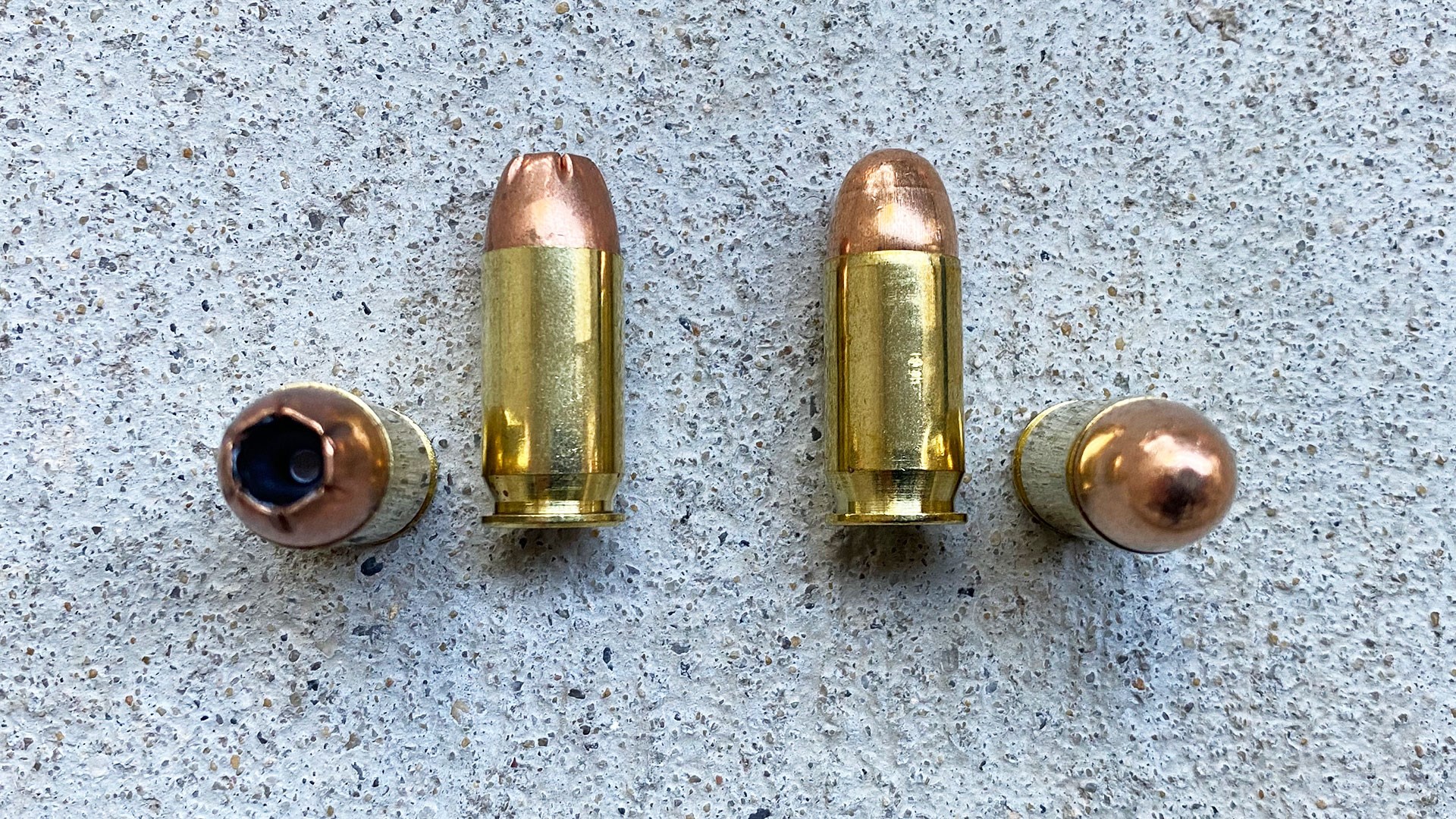 Remington 230-grain JHP .45 ACP loads (left), compared with Winchester 230-grain ball loads.
Remington 230-grain JHP .45 ACP loads (left), compared with Winchester 230-grain ball loads.
Winchester, Frankford Arsenal and the Union Metallic Cartridge Co. had been working on the loads for the new pistol cartridge. At the time of the trials, these ammo companies were loading a 200-grain full metal jacket (FMJ) bullet with a velocity of 900 f.p.s. This load passed the tests, but later, it was modified to have a 230-grain FMJ round traveling at 850 f.p.s. The first cartridges sent into service came from the Frankford Arsenal and were headstamped “F A 8 11,” for the August 1911 date.
Both cartridge and pistol enjoyed immediate success—too much, in fact, because as World War I came along, demand far outstripped availability. Both Smith & Wesson and Colt were forced to ramp up their large-frame revolver production chambered for the .45 ACP during World War I. These revolvers relied on “half-moon clips” to provide for simultaneous extraction and ejection of the rimless cases from the cylinder. After the war, the Peters Cartridge Company added a thick rim to the .45 ACP, calling it the .45 Auto Rim. It is ballistically and dimensionally identical to the ACP cartridge, save for the rim. This development was the result of thousands of surplus Model 1917 Smith & Wesson and Colt revolvers being dumped onto the surplus market.
The reason for the success of the .45 ACP cartridge is simple. It works. People shot with it “stay shot,” as it is often said. A 230-grain, .45-cal. bullet with proper placement is capable of effectively putting an assailant down. The .45 ACP cartridge also has the very desirable characteristic of being inherently accurate. A properly tuned semi-automatic pistol or revolver can often put five shots into a ragged hole at 25 yards.
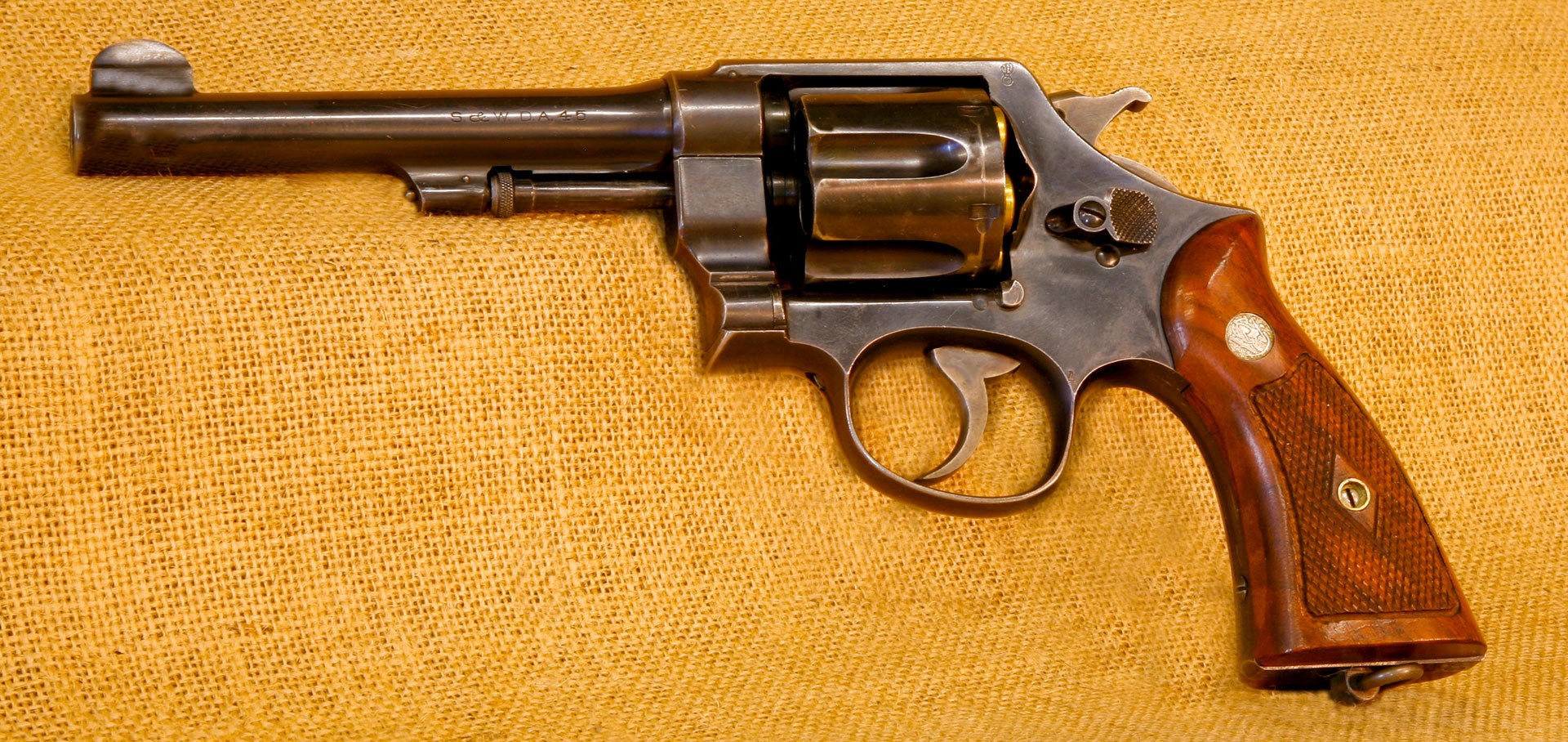 A Smith & Wesson Model of 1917 service revolver chambered for .45 ACP.
A Smith & Wesson Model of 1917 service revolver chambered for .45 ACP.
For several decades, the M1911 pistol and .45 ACP cartridge had an undeserved reputation for being difficult to shoot. Early pistols were loosely fitted in order to keep them running in wartime environments of mud, dust and sludge. Pistols with a lot of free tolerances do not group as well as those that have had those tolerances tightened up. Of course, fitted pistols need to be kept clean and lubricated to maintain their reliability.
Any U.S. military cartridge is going to have some built-in popularity due to the surplus market. Surplus guns and ammunition are often heavily discounted, and when that gun and cartridge were the staple of the U.S. military and many law-enforcement agencies for 71-plus years, the result is that the .45 ACP is almost universally available.
The popularity of the .45 ACP was not limited to the M1911 pistol. The cartridge has been chambered for semi-automatic pistols made by Browning, Colt, Heckler & Koch, Ruger, SIG Sauer, Smith & Wesson, Taurus, Walther and many more. Colt and Smith & Wesson have been joined by Ruger and Taurus, as well as many Italian replica manufacturers, in creating revolvers chambered for the .45 ACP, both single action as well as double action. Carbines and submachine guns emerging after the famous Thompson have been chambered in .45 ACP. Micro pistols like the Semmerling LM4 and the Liberator were also chambered for the cartridge. It is safe to state that the .45 ACP is ubiquitous.
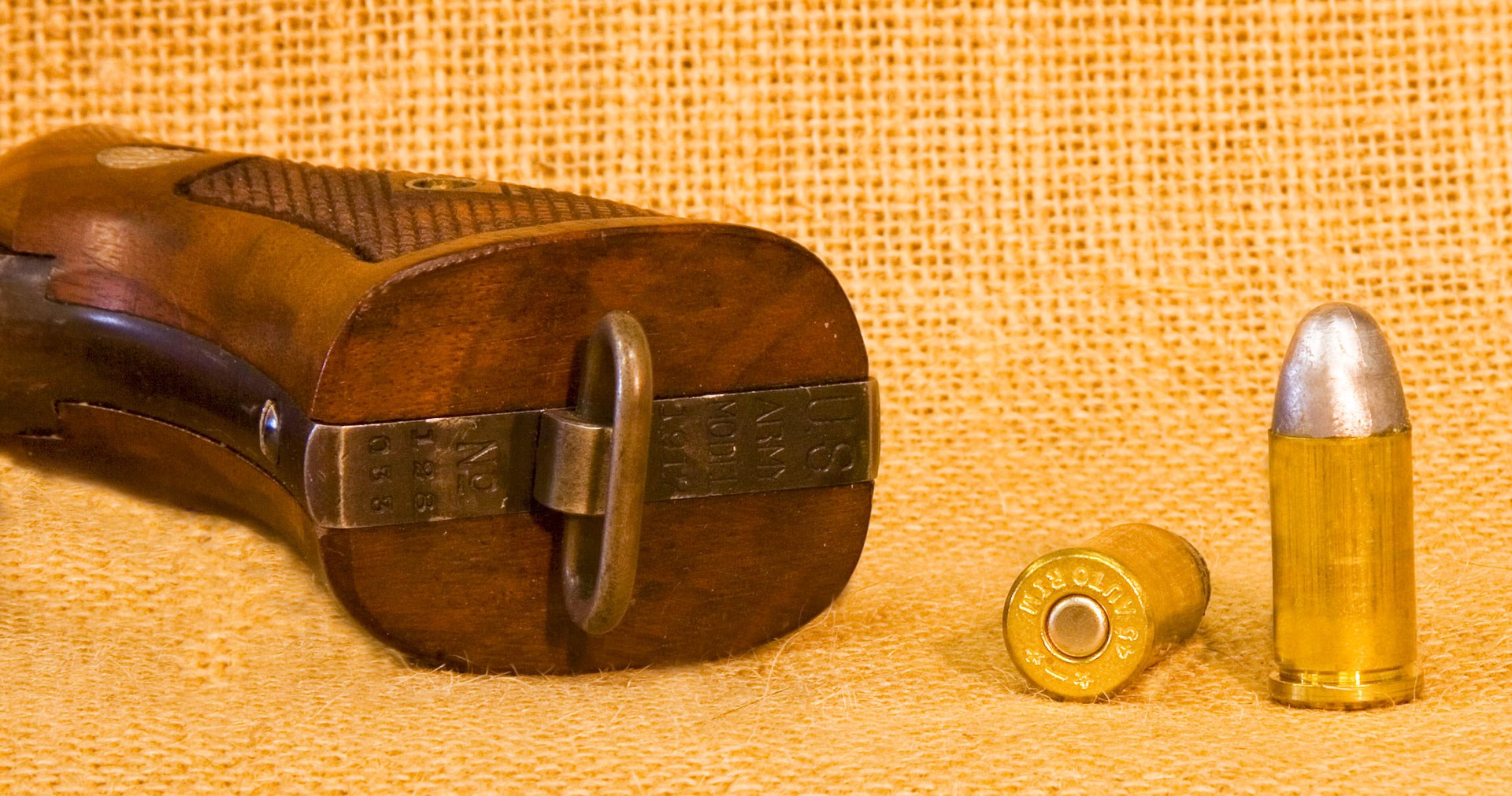 Two .45 Auto Rim cartridges, designed to work in revolvers like the S&W Model 1917 without the need for moon clips.
Two .45 Auto Rim cartridges, designed to work in revolvers like the S&W Model 1917 without the need for moon clips.
Handloading the .45 ACP is pretty straightforward, provided you don’t try to turn it into a magnum. Bullets—both cast and jacketed—are available from 118 to 250 grains, and when shoved by a medium-fast powder like Alliant’s Unique, Winchester’s W231 or IMR’s SR 4756, they provide good results. One note of caution, however, is that some .45 ACP brass has been made with small primer pockets. If you want to avoid suddenly ceasing your loading operation to pick out components from your reloading tools and punctuating that chore with loud profanities, make sure you separate small primer pockets from large primer pockets beforehand.
Factory ammunition runs an equally diverse profile, with everything from lightweight hollow points to monolithic solids and even some snake-shot loads. The length and breadth of what the .45 ACP is capable of doing is impressive.
Yes, there are cartridges with higher velocities and flatter trajectories. Yes, there are cartridges and loads that are more powerful and hit harder. But it’s worth noting that, even though the cartridge and its original pistol are more than 110 years old and have been superseded by “wonder nines” and “shorty forties,” the .45 ACP and the M1911 pistol are often still the preferred choice of many, whether in commercial circles, law enforcement or the military.














